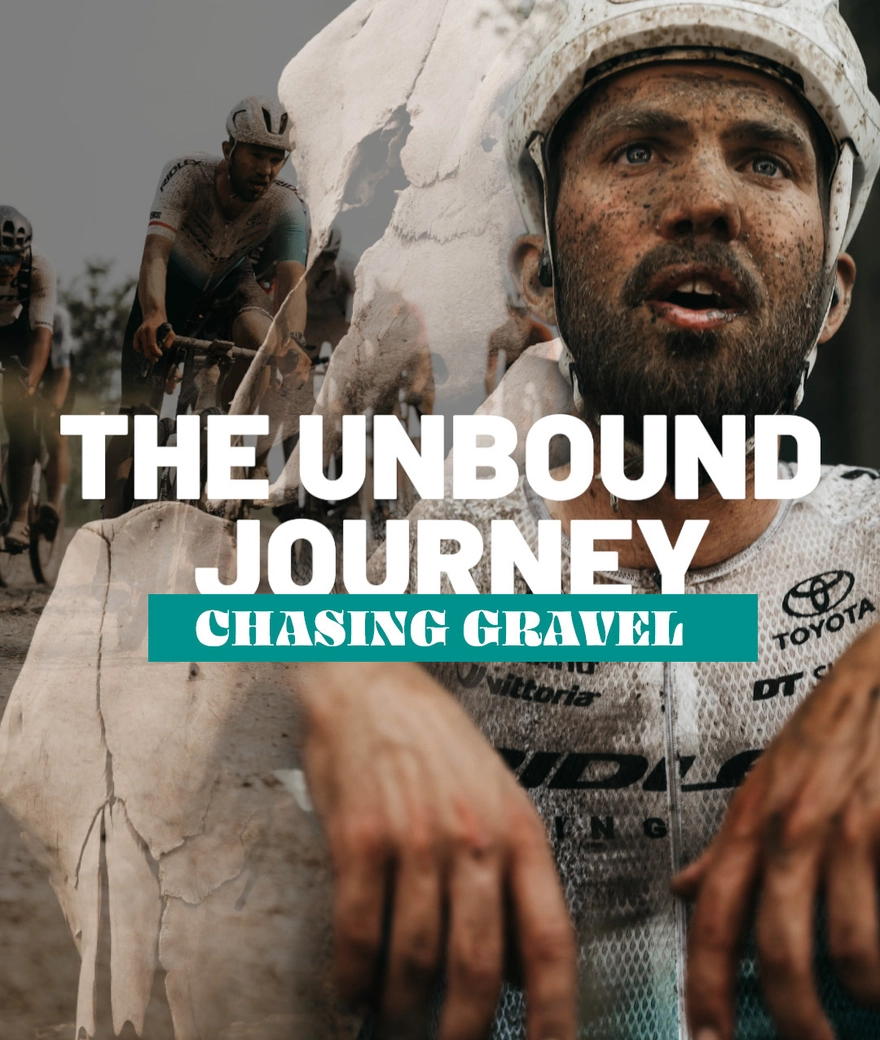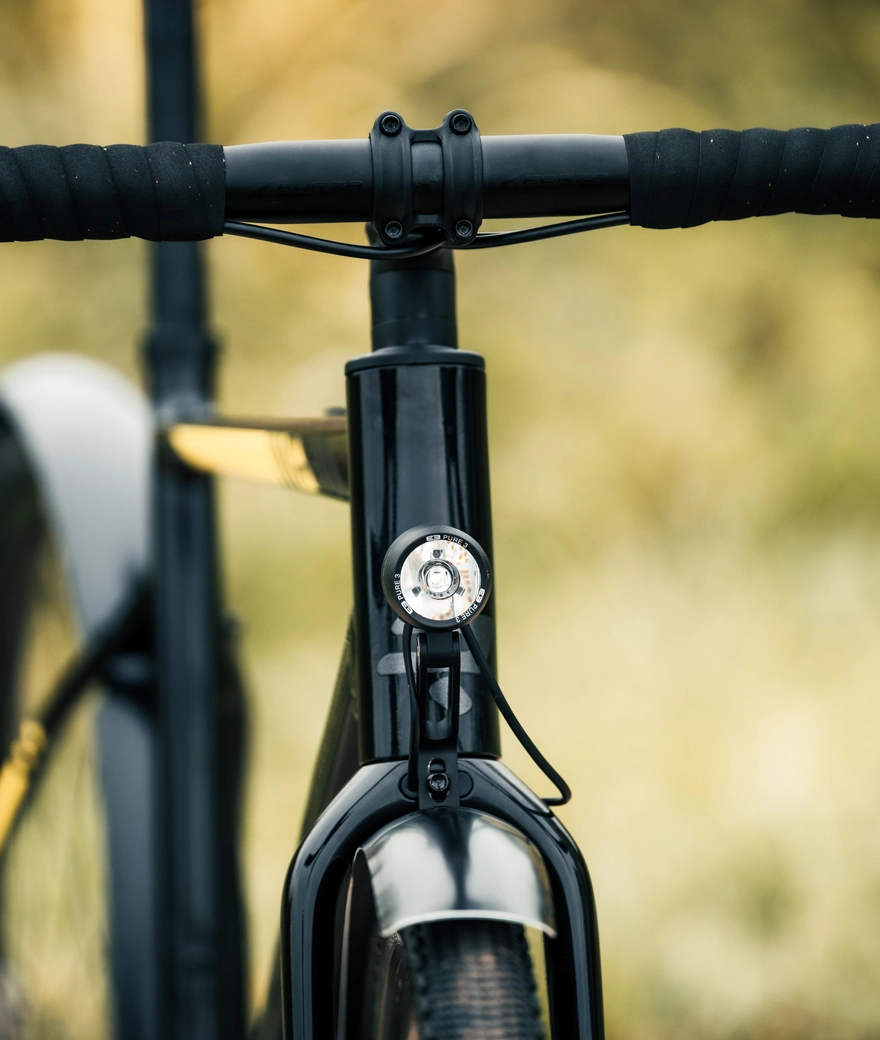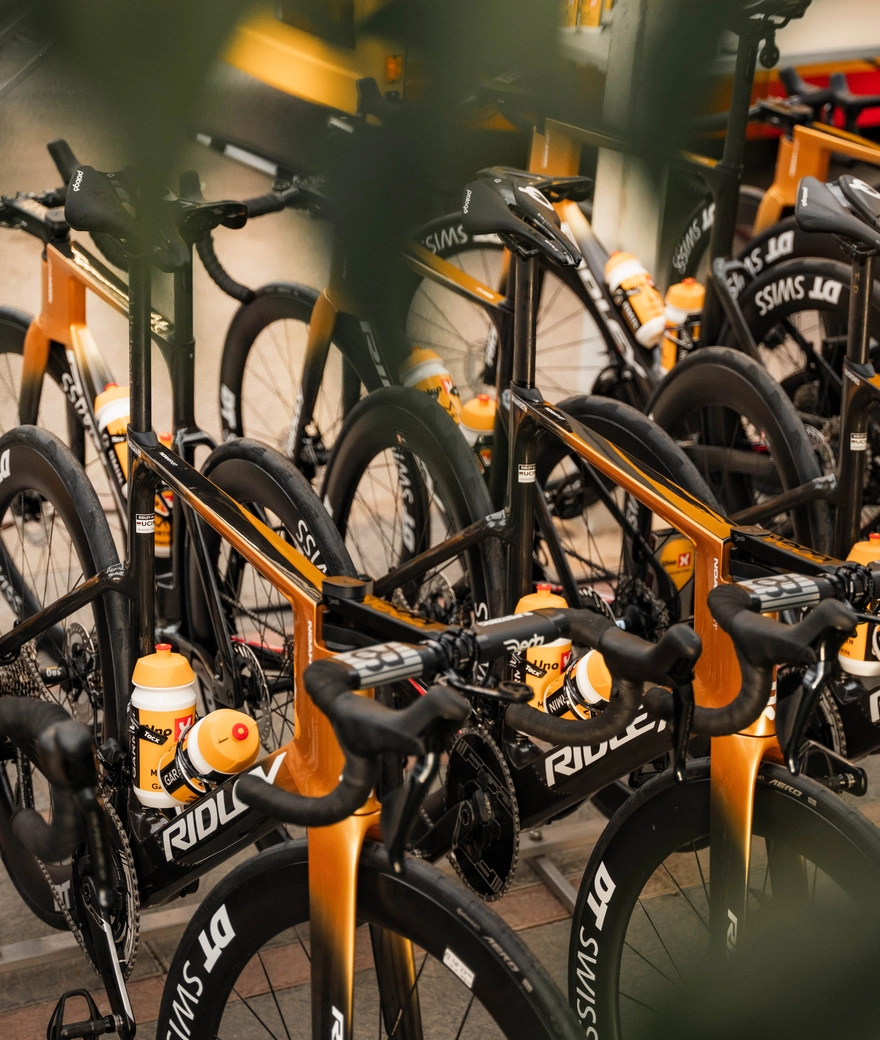5 Tips to conquer cobbles like a PRO
Discover the five key tips for riding smoothly and effectively over cobblestones.
To gather these tips, Ridley met up with Herman Frison (Lotto Soudal Team Manager) who has extensive knowledge on how the Belgians easily turn the trickiest cobblestone sections into child’s play.
It’s in the wheels
Is your bike equipped with deep dish carbon rims and skinny tires inflated to the max? If so, then cobbles are far from your best friend as this combo ensures that you’ll feel every single uncomfortable bump in the road while crawling along at a snail’s pace. That’s because higher profile rims and hard pumped tires increase the bike’s stiffness, preventing shocks from being absorbed. Hence, an adjusted tire pressure is especially key for cycling in areas with lots of cobbled sections.
Tire pressure is mainly dependent upon the weight of the rider, riding style and the course. It’s also dependent upon the type of tire used. Remember that old saying, “the harder, the better?” Thankfully that got thrown out the window, along with 21mm and 23mm wide tires as they too were not terribly effective at riding anything other than on pristine perfect pavement or on the track. Now it’s all about wider tires, lower pressures – for both comfort and effectiveness. That’s why you see many tires now only offered in sizes 25mm, 28mm and even up to 30-32mm. It’s also why pro cyclists competing in arduous races like Paris-Roubaix where the cobbled sections are so dangerous that you can be thrown off your bike at any moment often opt for tire pressures as low as 4 bar (and even lower in some cases!)
TIP: For optimal cobble riding, opt for 28mm or 30mm tires. With a wider tire, you can easily lower the pressure to significantly increase comfort - without increasing rolling resistance. A win-win!
Choose your line and look ahead
Cobblestone roads can wildly vary so be sure to adjust your approach according to each section you plan to conquer. Some may have a clearly visible “path” that will be smoother to ride. While others may have a path that’s a bit less obvious – such as those with a “hump” that runs along the middle of the cobbled road. On these roads, the sides are sunk deeper because of the many cars and tractors that use the road. As a result, the pitched middle section (the hump) is higher, and also much easier to ride as there are fewer treacherous potholes and sharp cobbles.
TIP: Choose your bike line wisely. If there is a clear "hump," that is often the best option. A good position in your cycling group is also crucial. Make sure you have enough room between you and the rider in front of you so you can safely look far ahead at what’s to come. This way you can anticipate extremely bad patches without losing speed – and while staying safe.
Settle in and Relax!
You won't feel one cobblestone section the next day, but 10 sections can be hard on your body. That’s why a relaxed cycling position is of utmost importance.
Hands: A lot of pro riders choose to keep their hands on the tops of the handlebars, some on the drops and a few on the hoods. Actually, there is no perfect guideline as long as your wrists and neck feel comfortable. Whatever you choose, just be sure to keep your grip relaxed – but not so relaxed that your hands can slip off the bar. For those who are not keen on the feeling of a relaxed grip, you can instead opt for a second layer of bar tape to reach that extra level of comfort.
Seating position: Slide your pelvis back a bit so as to “open up” your body. This will not only help you to look farther ahead up the road to ensure you stay upright, but it makes it easier to slightly lower your foot’s heel to push slightly more horizontally when you click down to a harder gear for gliding over the bumps. Simply focus on the tension in your legs as you feel them spinning powerfully and smoothly.
Keep moving!
Stalling on the bike is never good…not on regular asphalt, not uphill, and certainly not on cobblestones.
The higher the speed, the smoother the cobbles…so ride at a brisk pace. Choose a speed as high as possible, but one that you can hold until the end of the section so you don’t come to a halt just when the end of the strip is in sight.
Also keep in mind that every extra km/h at the beginning of the section is one km/h gained – so hit it a bit harder than you would a paved section before settling into that pace that you can maintain for the long run.
IF you do find yourself stalling, simply rock the handlebars forward in time with the most powerful part of the pedalstroke until you get back up to speed. This certainly comes in handy on steep wet cobbled climbs where your only choice is to stay in the saddle.
TIP: For long, tough cobbled sections, memorize (or write down in advance) the length and starting kilometer. Then you can better gauge your effort level and ride the section with confidence. Keep your cadence steady. On the straight stretches, keep pedaling continuously while applying power! That way you don't bump from cobblestone to cobblestone and you keep your bike well under control.
The ideal bike for cobblestones
Één kasseistrookje zal je de dag nadien niet voelen, maar 10 stroken kunnen wel zwaar in de kleren hangen. Een ontspanning fietshouding is zeker geen overbodige luxe.
Heel veel profrenners opteren om de handen bovenaan het stuur te houden, sommige in de drops en enkelingen op de hoods. Eigenlijk is er geen perfecte richtlijn, voel gewoon jouw polsen en nek heel goed aan.
Ontspan je grip (zorg wel dat jouw handen niet van het stuur glippen), duw jouw bekken goed achteruit en focus de spanning op jouw benen. Voel jouw benen krachtig en vlot ronddraaien.
Verkrampt op de kasseien rijden zal zorgen voor slechte beslissingen over jouw rijlijnen en zal je erg vroeg doen stilvallen.
The ideal bike for cobblestones
The Fenix is without a doubt the best cobblestone bike. It combines comfort with excellent power transfer. The rear and top end of the bike are completely dedicated to comfort: The thin rear triangle, 27.2mm seatpost and curved top tube give lots of comfort. While the wide BB, diamond-shaped down tube, wide head tube and reactive fork are designed to convert your power into speed as perfectly as possible.
The Fenix easily mounts comfy 28mm tires. The Forza N1 handlebar is known for being surprisingly comfortable as well as incredibly aerodynamic. The Fenix is absolutely ready to conquer the cobbles…and now you are too thanks to the tips above.
Trust in Belgian knowledge!
Discover the Fenix

Fenix SLiC - SRAM Force eTap AXS 2x12
| Design | Heritage |
|---|---|
| Color 1 | Beige // 540 |
| Color 2 | Black // 8 |

Fenix SLiC - SRAM Force eTap AXS 2x12
| Design | Power |
|---|---|
| Color 1 | Black // 98 |
| Color 2 | Beige // 540 |





